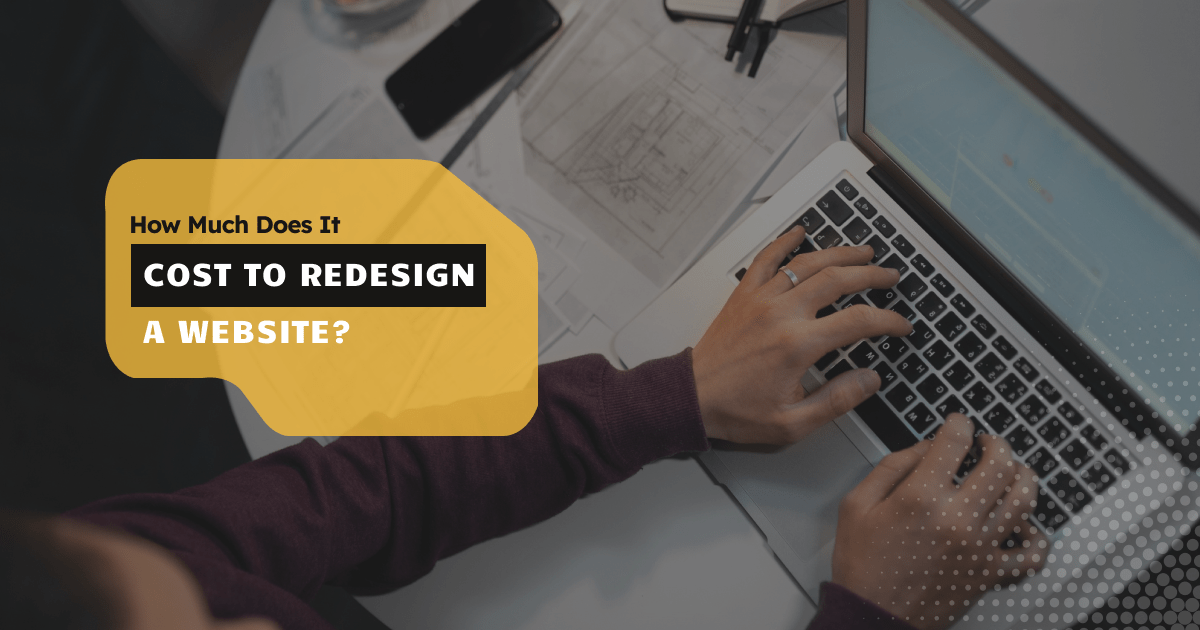When it comes to building a website, there are many important questions that need to be answered. From choosing the right platform to determining the best design approach, the process can be overwhelming.
However, having a clear understanding of the various web design questions and answers can help simplify the process and ensure that your website is both visually appealing and functional.
In this article, we will explore some of the most commonly asked web design questions and provide insightful answers to help guide you through the design process. Whether you are a beginner or an experienced web designer, this article will provide you with valuable information and tips to help you create a successful website.
What is Website Design Questionnaire?
A questionnaire is generally asked by web designers and clients to gather information about the desired features and functionalities of a website.
This questionnaire is designed to help clients clearly articulate their vision for their website, and provide web designers with the information they need to create a website that meets the client’s needs and expectations.
Get The Guide: How Often Should You Redesign Your Website? Know the Time and Reasons
Why Do You Need a Website Design Questionnaire?
It is a critical tool for any web design project as it helps to ensure clear and effective communication between the designer and the client. There are several reasons why a website design questionnaire is necessary:
Clarification of project goals: The questionnaire helps to ensure that both the designer and the client have a clear understanding of the project’s goals and objectives. This helps to ensure that the website meets the client’s expectations and delivers the desired results.
Gathering of important information: The questionnaire helps to gather important information about the client’s target audience, brand image, design preferences, and content requirements. This information is crucial for creating a website that is tailored to the client’s specific needs and preferences.
Time-saving: A well-structured questionnaire can save time by reducing the need for multiple revisions and clarifications. By gathering all the necessary information upfront, the designer can proceed with the design process without interruption and produce a website that meets the client’s expectations.
Better decision making: The questionnaire helps the designer to make informed decisions about the design, layout, and functionality of the website. It provides the designer with a clear understanding of the client’s requirements and preferences, which helps to create a website that is both functional and aesthetically pleasing.
Benefits of Web Design Questionnaires
The benefits of using a web design questionnaire are numerous. It helps to ensure that both the designer and the client are on the same page in terms of the project’s goals, objectives, and expected outcomes.
Also, it helps to gather detailed information about the client’s preferences, target audience, and brand image, which are crucial for creating a website that meets the client’s expectations.
A well-structured questionnaire can also save time and reduce the need for multiple revisions, thus streamlining the design process.
What to Include in a Web Design Questionnaire?
When creating a web design questionnaire, it’s important to include several key elements. Here are some of the most essential items to include:
Project Overview: A brief description of the project’s goals, objectives, and expected outcome.
Target Audience: Information about the target audience, including demographics, interests, and behaviors.
Brand Image: Information about the client’s brand image, including the brand’s values, personality, and tone.
Design Preferences: Details about the client’s design preferences, including preferred color schemes, font styles, and overall aesthetic.
Content: Information about the content that will be featured on the website, including the types of pages, the number of pages, and any specific content requirements.
Functionality: Information about the desired website functionality, including e-commerce capabilities, contact forms, and any other specific functional requirements.
Budget and Timeline: Information about the project budget and timeline, including the expected completion date and any specific deadlines.
By including these key elements in a web design questionnaire, designers and clients can ensure that they have all the information they need to create a successful website that meets the client’s expectations.
Moreover, we have included some examples below to understand the question type.
Examples Of Questions To Ask When Designing A Website As A Designer
These questions are important to ask the client during the web design process.
Ask for basic details about this design:
This question is important as it provides the designer with a clear direction and focus for the design project. It helps the designer understand the basic objectives and goals of the client’s website.
What are your website goals?
This question helps the designer understand the client’s overall objectives for the website and what they hope to achieve. This information is crucial in determining the design approach, content strategy, and overall website functionality.
What specific services does your company provide?
This question provides the designer with a better understanding of the client’s business and what they offer. This information is important in determining how the design should reflect the client’s brand and services.
Who is your target client & audience?
Understanding the target audience is key in determining the design approach and content strategy for the website. The designer can tailor the design to appeal to the target audience, which can help increase engagement and conversions.
Who are your Competitors?
Knowing the client’s competitors can help the designer understand what the competition is doing and how they can create a unique design that stands out from the crowd.
Does your company have any Branding & Style details?
If the client has established branding and style guidelines, the designer can incorporate these elements into the design to ensure the website aligns with the client’s overall brand.
Who will provide Website content and elements for the new website?
Knowing who will be responsible for providing the website content and elements is important in determining the design approach and overall website functionality.
Do you currently have a website?
If the client already has a website, the designer can review it to get a better understanding of what the client likes and dislikes about the current design.
Why do you want a new website?
Understanding the reason for wanting a new website can provide valuable insight into the client’s goals and objectives for the website. This information can help the designer create a design that meets the client’s needs.
What do you like about your website?
This question can provide the designer with valuable information about what the client likes about their current website and what they would like to see in the new design.
What similar websites do you like and what is it you like about them?
This question can provide the designer with inspiration and ideas for the new design. The client’s favorite websites can give the designer a better understanding of the client’s design preferences.
What features will your website need?
Knowing the specific features the client wants on their website is crucial in determining the design approach and overall website functionality.
How much budget do you have to make design this website?
Understanding the client’s budget is important in determining the scope of the project and what design elements can be incorporated into the website.
What about the timeframe to complete this design?
Knowing the timeframe for the project helps the designer plan and prioritize the design process to ensure the project is completed on time.
Essential Web Design Questions and Answers
The questionnaire typically covers topics such as target audience, website goals, content, design preferences, and functional requirements.
What is Website Design?
Website design refers to the process of creating the visual and functional aspects of a website, including its layout, color scheme, typography, graphics, and overall user experience. Website design is a crucial aspect of creating an effective and successful website, as it helps to attract and engage users, and provides them with a positive and efficient user experience.
Is this a Website Redesign?
Without more context, it is difficult to determine if this is a website redesign. A website redesign typically involves making changes to an existing website, either to improve its appearance, functionality, or both.
Redesigning a website has both positive and negative aspects. So, before making a decision, don’t forget to read our blog on “Can You Redesign An Existing Website?“
What Website Type Best Fits for Your Brand?
The type of website that best fits your brand will depend on the nature of your business, your target audience, and your goals for the website. Some common types of websites include:
- Personal Blogs
- Business Websites
- E-commerce Websites
- Portfolio Websites
- News and Magazine Websites
- Non-Profit Websites
- Educational Websites
- Government Websites
It is important to consider your brand and the message you want to convey, as well as your target audience and the type of information and functionality they need, when choosing the type of website that best fits your brand.
What are the 7 C’s of website design?
The 7 C’s of website design are:
- Content: Relevant and useful information that addresses the needs of the target audience
- Clarity: Simple and straightforward design with easy-to-understand language
- Consistency: Consistent use of color, typography, and visual elements throughout the site
- Conversion: Design elements that encourage visitors to take a specific action, such as making a purchase or signing up for a newsletter
- Credibility: Design elements that build trust, such as testimonials, awards, and professional associations
- Cues: Visual cues that guide the user through the site, such as arrows and buttons
- Calls to Action: Clear and prominent calls to action that encourage visitors to take specific actions on the site.
What are the four types of website design structures?
The four types of website design structures are:
- Static: A simple and straightforward design with fixed content and minimal interactivity.
- Dynamic: A design that incorporates databases and server-side scripting, allowing for content to be updated and modified easily.
- Responsive: A design that adapts to different screen sizes and devices, such as desktop computers, laptops, tablets, and smartphones.
- Hybrid: A combination of static and dynamic design, allowing for some elements to be static while others are dynamic.
What are the three basic website structures?
The three basic website structures are:
- Hierarchical: A structure that organizes content into categories and subcategories, similar to a tree structure.
- Linear: A structure that guides users through content in a step-by-step sequence, from beginning to end.
- Web Application: A structure that allows for complex interactions and functionality, such as online shopping carts and social media platforms.
What are the 3 types of web design?
The 3 types of web design are:
- Graphic design: The visual elements of the website, such as color, typography, and images.
- User Experience (UX) design: The process of designing the website to be user-friendly, accessible, and easy to navigate.
- Technical design: The back-end coding and development of the website, including HTML, CSS, and JavaScript.
What are the 5 basic parts of a website?
The 5 basic parts of a website are:
- Domain Name: The unique address of the website on the internet.
- Content Management System (CMS): The platform used to manage and publish the website’s content.
- Design and Layout: The visual appearance and arrangement of the website’s elements.
- Content: The information, images, and media displayed on the website.
- Database: The collection of information used to power the website, such as products, users, and blog posts.
How much does a beginner designer charge?
A beginner designer may charge anywhere from $20 to $50 per hour, depending on their level of experience and the scope of the project. It’s important to note that a beginner designer may not have the same level of expertise as a more experienced designer, so it may be worth investing in a more experienced designer for larger or more complex projects.
How much does a freelancer charge for website design?
Freelance website designers can charge anywhere from $30 to $150 per hour, depending on their level of experience and the scope of the project. The cost will also depend on the location of the freelancer and the geographic location of the client.
What is the hourly rate for website design?
The hourly rate for website design can range from $20 to $200 or more, depending on the experience and location of the designer. The cost will also depend on the scope of the project and the level of customization required. It’s important to get quotes from several designers to get a better understanding of the market rate for the type of project you’re looking to have done.
Questions May Arise If You Are Planning To Design A WordPress Website
If you are planning to design a WordPress website, you are likely to have many questions about the process. Here, we will explore some of the most common questions that may arise when designing a WordPress website, and provide insightful answers to help guide you through the process.
Why use WordPress for your next website?
WordPress is popular and widely used because of its user-friendly interface, versatility, and scalability. It offers a range of customizable templates and plugins, making it suitable for a variety of website types, from blogs and portfolios to e-commerce stores and large corporate sites.
Can I design my own website using WordPress?
Yes, you can design your own website using WordPress. WordPress is a user-friendly platform that allows for easy customization and design, even for those with limited technical skills. There are many resources available, such as tutorials and online courses, to help you learn how to create a website using WordPress.
What services do WordPress web design companies offer?
WordPress web design companies typically offer a range of services, including:
- WordPress installation and customization
- Theme customization and development
- Plugin development and customization
- Content management and updates
- Search engine optimization (SEO)
- E-commerce integration and development
- Website hosting and maintenance
- Website migration and backup services.
Do you need a web designer for WordPress?
Whether or not you need a web designer for WordPress depends on the complexity of your website and your own technical skills. If you have a basic website and the necessary technical skills, you can create your own WordPress website without hiring a web designer. However, if you want a more complex website, or if you lack the technical skills, it may be beneficial to hire a web designer to help you create the site you want.
What is the difference between a WordPress developer and a WordPress designer?
A WordPress developer focuses on the back-end coding and development of the website, using languages such as PHP, HTML, CSS, and JavaScript to create and customize the site. A WordPress designer focuses on the visual appearance and design of the website, including layout, typography, color scheme, and graphic design.
Do professional companies use WordPress?
Yes, many professional companies use WordPress for their websites. WordPress is a flexible and powerful platform that can be used for a wide range of website types, from small personal blogs to large-scale e-commerce sites and corporate websites. Its ease of use and customization make it a popular choice for many companies, both large and small.
How much does a WordPress design cost?
The cost of a WordPress design can vary depending on factors such as the complexity of the design, the experience of the designer, and the geographic location. On average, a simple WordPress design can cost anywhere from $500 to $5,000, while a more complex custom design can cost upwards of $10,000 or more.
How much does a basic WordPress website cost?
The cost of a basic WordPress website can range from around $500 to $3,000, depending on factors such as the type of website, the amount of customization required, and the experience of the developer. A basic website typically includes a few pages, basic design, and essential plugins.
How much does a custom WordPress website design cost?
A custom WordPress website design can cost anywhere from $5,000 to $100,000 or more, depending on the complexity of the design and the features and functionality required. A custom design typically includes unique visuals, custom plugins, and extensive branding elements.
How much does it cost to hire a WordPress designer?
The cost of hiring a WordPress designer can vary depending on their level of experience, location, and the scope of the project. On average, a professional WordPress designer can charge anywhere from $50 to $200 per hour.
How much does it cost to hire someone to build a website on WordPress?
The cost of building a website on WordPress can vary depending on the complexity of the project, the experience of the developer, and the location of the developer. On average, a basic WordPress website can cost anywhere from $500 to $5000 or more. More complex websites, such as e-commerce sites or custom-built applications, can cost upwards of $10,000 or more.
Perfection
In conclusion, a website design questionnaire is essential for both clients and web designers. It helps to clearly define the goals, expectations, and requirements of the website and ensures that the final product is both visually appealing and functional.
By knowing the questionnaire, clients and designers can work together to create a website that meets the client’s specific needs and exceeds their expectations. Whether you are a client or a web designer, utilizing a website design questionnaire is a crucial step in the design process, and can help to ensure a successful outcome for your website.

Have any questions regarding website design or UI/UX Design?





